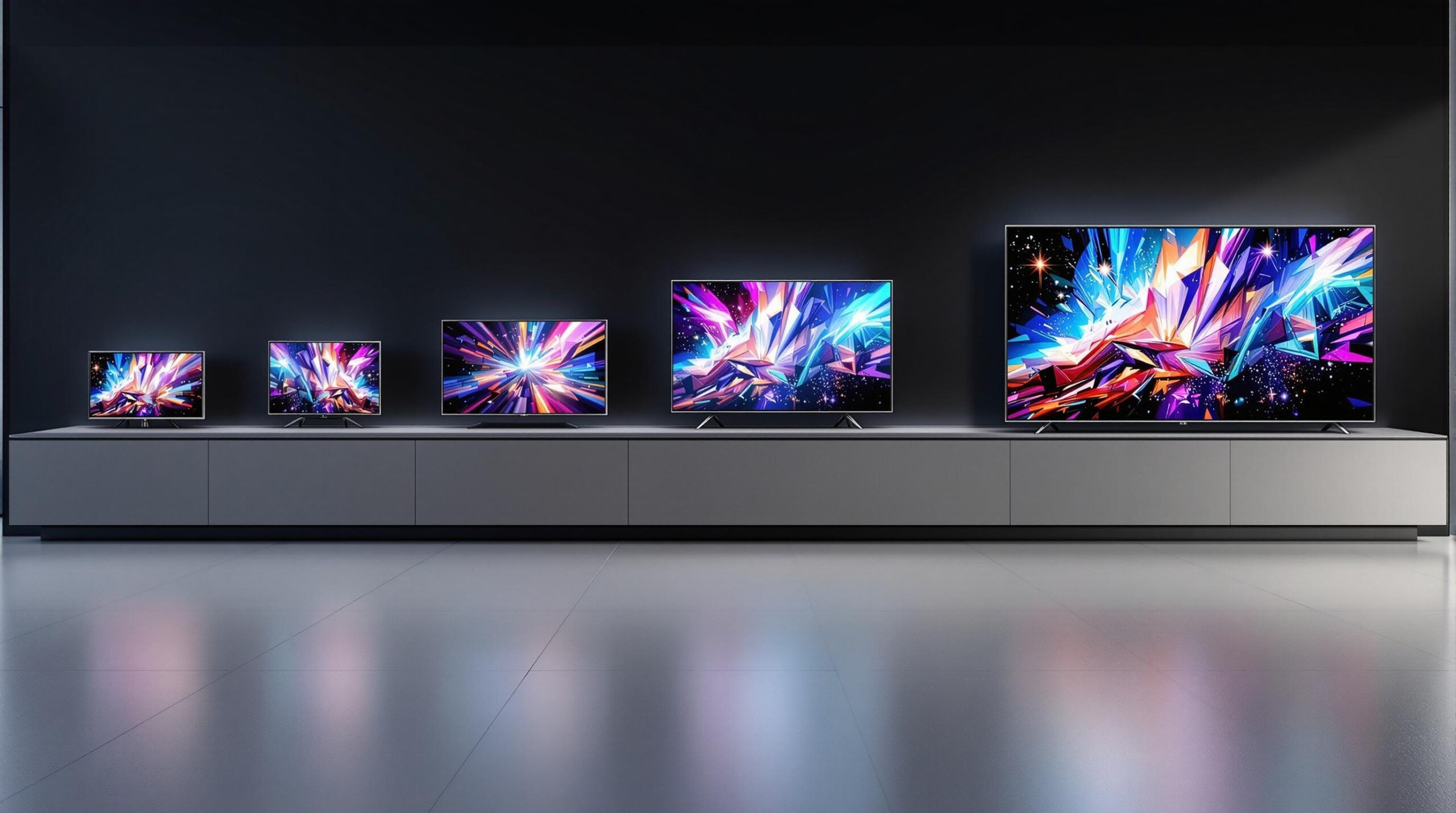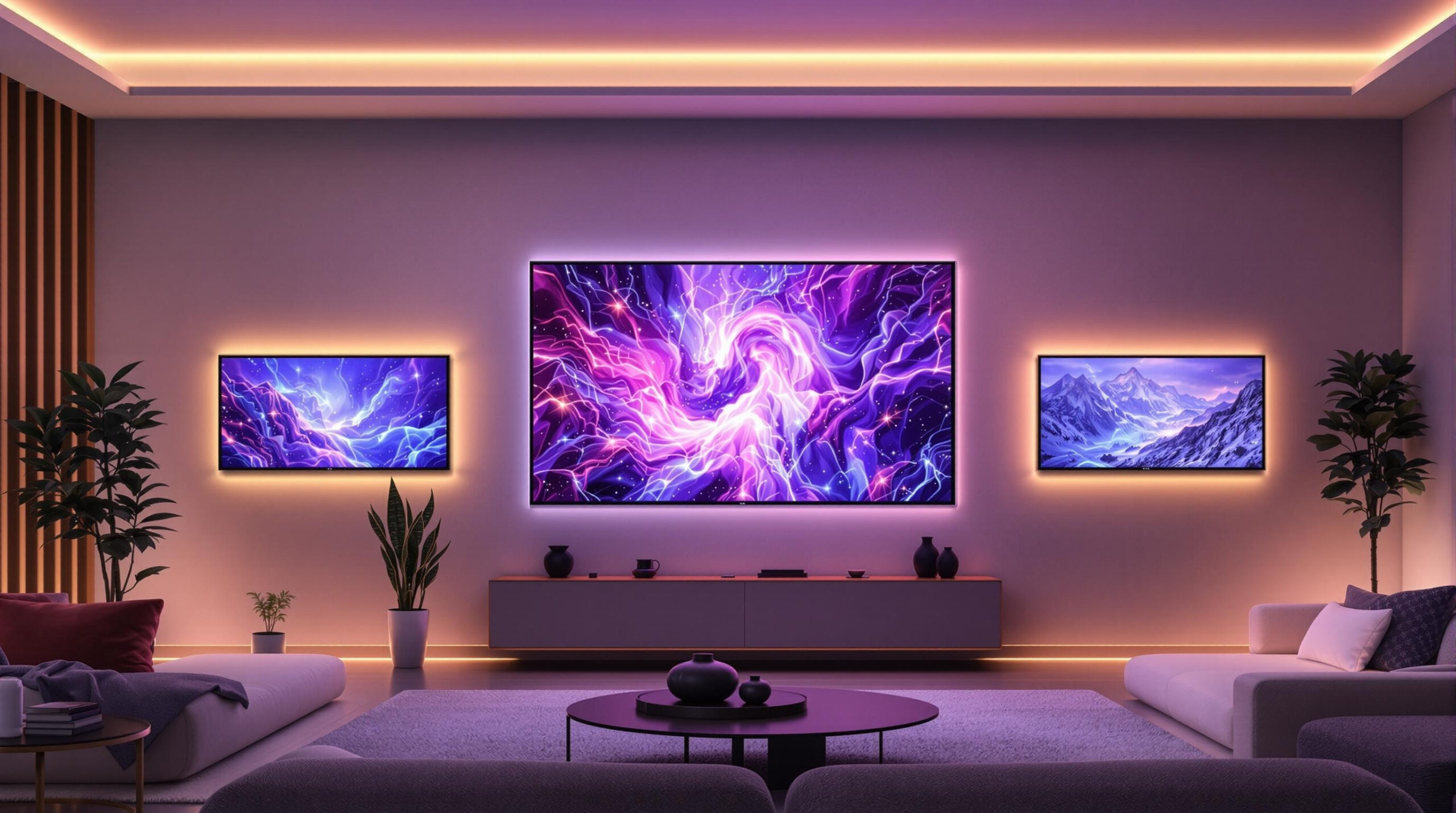Introduction: A Revolution in Plain Sight
In the blink of an eye—or so it seems—our television screens have transformed from bulky boxes to sleek, intelligent displays that can respond to our voices, adjust their visuals to suit the time of day, and deliver a cinematic experience that was once reserved for the theater. At the heart of this transformation is the remarkable journey of LCD TV technology, which has evolved through decades of innovation. From the first flat-panel displays to the AI-powered smart TVs of 2025, LCDs have undergone a metamorphosis that blends physics, engineering, and creativity into one of the most significant consumer electronics revolutions of the 21st century.
This article explores the evolution of LCD TVs, highlighting how we went from fragile flat panels with limited brightness and poor contrast to dazzling, energy-efficient smart displays that now serve as both entertainment hubs and digital companions. We’ll unpack the breakthroughs that reshaped backlighting, color reproduction, motion clarity, and interactivity, offering a comprehensive look at how LCD TVs became the beating heart of modern home entertainment
The Birth of Flat Panels: LCD Takes the Stage
The origins of LCD television can be traced back to the early 1980s, when liquid crystal display technology was primarily used in watches, calculators, and rudimentary monitors. By the early 1990s, small-scale LCD panels were being tested as alternatives to cathode-ray tubes (CRTs). The technology was enticing: thin, lightweight, and far more energy-efficient than the glass vacuum behemoths of the CRT era.
Early LCD TVs used passive-matrix technology, which struggled with motion blur and response time. These were replaced in the late 1990s by active-matrix LCDs using thin-film transistors (TFTs) to control each pixel independently. This improvement allowed for greater brightness, improved color accuracy, and larger screen sizes. Still, LCD TVs faced a serious hurdle—backlighting. Unlike OLED, which emits light per pixel, LCDs do not produce their own light. They rely on a backlight to shine through the liquid crystal matrix and color filters. The earliest backlights were cold cathode fluorescent lamps (CCFLs), which were bulky, uneven, and limited in contrast. But all of that would soon change.
LED Backlighting: The Turning Point
The true rise of LCD TVs began when manufacturers adopted LED backlighting in the late 2000s. Light Emitting Diodes offered a smaller form factor, greater energy efficiency, and better control over brightness. Suddenly, LCD TVs could be slimmer, more vibrant, and more responsive.
Two forms of LED backlighting emerged: edge-lit and full-array. Edge-lit designs placed LEDs around the perimeter of the screen, while full-array models distributed them across the entire back surface. The latter enabled local dimming, allowing zones of the screen to independently brighten or darken depending on content. This development dramatically improved contrast ratios and black levels—long considered a weakness of LCDs.
By the early 2010s, LED-lit LCD TVs had become the dominant form of flat-panel display, leaving plasma and rear-projection formats behind. Models became thinner, lighter, and more efficient. Consumers could now own a 55-inch TV that weighed less than 40 pounds, consumed half the electricity of earlier models, and displayed high-definition content in ways previously unthinkable.
High Definition and the Shift to 4K: Clarity Meets Scale
Another major leap in LCD evolution came with the advent of high definition (HD). Early LCDs had resolutions of 720p or 1080i, but by the late 2000s, 1080p Full HD became the new benchmark. LCDs with Full HD resolution delivered a level of clarity and pixel precision that matched the sharpness of HD broadcasts, Blu-ray discs, and video games. Sports, movies, and games all looked sharper and more immersive.
Then came the next frontier: Ultra High Definition, or 4K. With four times the resolution of 1080p, 4K LCDs elevated detail to near-photographic levels. Initially, content was scarce, and 4K panels were expensive, but as streaming platforms like Netflix and YouTube embraced 4K, and game consoles adopted UHD output, demand soared.
Manufacturers responded by increasing panel production and driving down prices. In less than five years, 4K went from elite to mainstream. Today, nearly all LCD TVs 50 inches or larger come with 4K resolution, and some premium sets offer 8K panels, anticipating the future of ultra-high-resolution entertainment.
Color Enhancement: Quantum Dots and Beyond
One of the most pivotal moments in LCD development was the incorporation of Quantum Dot technology, designed to solve one of LCD’s nagging problems: color fidelity. Standard color filters could only approximate the vividness of the real world. Quantum Dots—nanocrystals that emit specific wavelengths when excited by light—brought a revolution in color volume and saturation. By placing a layer of Quantum Dots between the LED backlight and the LCD matrix, manufacturers could generate purer reds and greens, significantly expanding the color gamut and enabling HDR (High Dynamic Range) visuals. This technology became the core of QLED TVs, which today represent a significant portion of the premium LCD market.
Now in 2025, some LCD TVs use advanced forms of quantum technology, including nano-crystal arrays and perovskite-based materials, offering even greater brightness and color control. Combined with better local dimming and high-bit-depth processing, these TVs now deliver near-cinematic levels of color fidelity, making them ideal for movies, gaming, and professional content creation.
HDR, Brightness, and Contrast: Elevating Visual Drama
With 4K resolution and enhanced color came the demand for greater contrast and dynamic range. Enter HDR10, Dolby Vision, and HDR10+, which expanded the luminance scale, enabling TVs to display brighter highlights and deeper shadows within the same frame. LCD TVs with Full Array Local Dimming and Mini-LED backlighting could now fully take advantage of HDR by achieving peak brightness levels upwards of 2,000 nits. Mini-LED, in particular, has pushed LCD TVs into territory once thought exclusive to OLEDs. By shrinking the size of individual LEDs and packing thousands into the backlight array, manufacturers have achieved finer control over dimming zones. This reduces blooming, improves black levels, and makes HDR pop with intense visual dynamism.
For viewers, this translates to seeing sunlight shimmer off water, fireworks dazzle against night skies, and shadowy forests rendered with rich texture and mood. It’s not just about image quality—it’s about emotional resonance.
Motion Clarity and Gaming: LCD Becomes Responsive
Early LCD TVs were notorious for motion blur and ghosting, but modern iterations have turned this weakness into a strength. Thanks to high refresh rates, low response time panels, and motion interpolation, today’s LCDs excel at delivering smooth, crisp motion. Gamers, in particular, benefit from LCD technology that supports 120Hz native refresh rates, Variable Refresh Rate (VRR), Auto Low Latency Mode (ALLM), and HDMI 2.1 compatibility. These features allow for near-instantaneous input response, making LCD TVs highly competitive with dedicated gaming monitors.
Even cinematic content benefits from frame-accurate motion clarity, allowing for smooth panning shots and action sequences free from judder or smearing. With the right processor and panel configuration, LCD TVs now offer motion fidelity that appeals to sports fans, film buffs, and pro gamers alike.
Smart TVs and Voice Control: The Connected Evolution
Perhaps the most transformative shift in LCD technology has nothing to do with the panel itself but with software intelligence. The rise of Smart TV platforms like Tizen, webOS, Android TV (now Google TV), and Roku OS has turned LCD TVs into digital hubs for the connected home.
A Smart LCD TV in 2025 offers far more than streaming apps. It recognizes voice commands, integrates with smart home ecosystems, displays calendars, weather, fitness stats, and even functions as a digital art gallery when idle. With built-in assistants like Google Assistant, Alexa, or Bixby, your LCD TV becomes an extension of your personal AI assistant.
Modern processors also enable AI upscaling, which analyzes low-resolution content and intelligently rebuilds texture and detail for 4K and 8K panels. This ensures older shows, DVDs, or streamed content still look crisp on today’s high-resolution displays.
From gaming to video calls, live workouts to real-time news dashboards, LCD TVs have evolved into full-fledged interactive command centers for everyday life.
Design and Form Factor: From Boxes to Bezel-Less Beauty
The earliest LCD TVs were marvels of thinness—until you saw them in profile. Early edge-lit designs still needed thick bezels and ventilation space. But modern LCD TVs have become ultra-thin, virtually bezel-less, and wall-hugging thanks to advances in thermodynamics and panel architecture. Samsung’s Frame series, LG’s Gallery Design, and Sony’s BRAVIA XR line feature models that mount flush against walls and blend seamlessly into modern interiors. Today’s sets come in finishes from brushed metal to ceramic white, offering options for design-conscious buyers who see their TV as a statement piece as much as a functional display.
In addition, Ambient Mode and screensaver functions let LCD TVs display artwork, photos, or mood-setting animations when not in use, eliminating the eyesore of a black rectangle and turning your screen into an active part of your living space.
Energy Efficiency and Longevity: Green and Durable
LCD TVs have also benefited from advances in power efficiency. With the move to LED and now Mini-LED backlights, energy consumption has plummeted while brightness has soared. Motion sensors, light-adaptive brightness, and screen timers also reduce unnecessary usage. Compared to plasma or CRT, an LCD TV uses a fraction of the energy for a larger, sharper, and brighter image.
The longevity of LCD panels is also notable. With no organic compounds to degrade like in OLED, and no risk of burn-in, LCDs are particularly well-suited for high-use households, gaming marathons, or bright rooms where constant backlight strength is needed.
Conclusion: A Future Still in Motion
The journey of LCD TVs from flat to smart is one of relentless innovation. It has turned a once-fragile technology into a global standard, offering performance, design, and intelligence that adapts to the evolving demands of digital living. In 2025, LCDs have reached unprecedented heights, competing shoulder-to-shoulder with OLED and MicroLED in brightness, color accuracy, and smart integration.
But the evolution isn’t over. With new advances on the horizon—AI-generated content, augmented reality overlays, and even rollable displays—LCDs remain at the forefront of the home entertainment revolution. Their adaptability, affordability, and scalability ensure they’ll continue to shape how we watch, play, connect, and live for years to come. LCD may have started as the technology of the future. Today, it’s the technology of the present—refined, redefined, and still reaching for more.
LED/LCD TV Reviews
Explore Philo Street’s Top 10 Best LED/LCD TV Reviews! Dive into our comprehensive analysis of the leading OLED TV products, complete with a detailed side-by-side comparison chart to help you choose the perfect protection for your devices.




